The question of whether it is acceptable to use hiking shoes for everyday walking is one that comes up frequently among outdoor enthusiasts and casual walkers alike. It is a query that touches on various aspects of shoe design, comfort, and suitability for different terrains and weather conditions.
While on the surface it may seem a simple matter of preference, delving deeper reveals a complex interplay of factors that can affect not only comfort but also the potential for injury. As we explore this topic further, it is essential to keep in mind that the ultimate goal is to find a balance between comfort, safety, and functionality, irrespective of the shoe type.
Key Takeaways
- Hiking shoes are designed for challenging terrains and provide support, protection, and traction.
- Walking shoes prioritize comfort, alignment, and breathability, and are more suitable for well-maintained and flat trails.
- Hiking shoes are generally water-resistant or waterproof, while walking shoes prioritize breathability.
- The choice of footwear depends on the terrain, weather conditions, and personal preferences.
Understanding Hiking Shoes
In order to fully appreciate the distinct characteristics of hiking shoes, one must delve into their specially designed features.
These features include:
- A robust sole for enhanced grip,
- Reinforced components for durability and stability,
- Water-resistant materials for protection against moisture.
Hiking shoes are designed to withstand various terrains and weather conditions, making them a reliable companion for outdoor enthusiasts.
Understanding hiking shoes means recognizing their capacity to protect your feet from the harsh realities of the trail.
The soles provide greater grip, allowing users to navigate hills, mountains, and slippery surfaces effectively.
Reinforced toe caps, sides, and ankle support prioritize durability and stability, ensuring the shoes remain comfortable all day, even during intense hiking adventures.
In contrast to walking shoes, which prioritize cushioning and breathability, hiking shoes offer a waterproof or water-resistant feature.
This ensures your feet stay dry in wet conditions, a crucial aspect when exploring the great outdoors.
Therefore, if one decides to use hiking shoes for walking, it's important to consider the terrain and conditions, ensuring the level of support and protection offered by the shoes is appropriate for the activity.
Walking Shoes Explained
Delving into the realm of walking shoes, it becomes evident that their design principles fundamentally prioritize comfort, alignment, and breathability, making them ideally suited for well-maintained and flat trails.
Walking shoes are lightweight, with a cushioned heel and midsole, designed to deliver a comfortable stride throughout the day. The shoe is built with a rocker-style bottom that promotes a natural foot motion, reducing foot fatigue.
The shoe also features a firm heel counter to provide stability, ensuring good fit, and alignment. This feature helps prevent over-pronation or under-pronation, common problems many encounter when walking.
Breathable upper materials are another essential characteristic of a quality walking shoe, allowing for proper ventilation and reducing moisture build-up, which can lead to blisters.
When you're on the hunt to find walking shoes, it's essential to choose from reputable shoe brands that uphold these design principles in their products. Remember, a comfortable shoe that fits well is critical for long walks or periods of standing.
Comparison: Terrain and Conditions

In order to fully appreciate the utility of hiking shoes for walking, it is crucial to compare the terrain and conditions for which each type of shoe is designed. There are significant differences in the challenges presented by various terrains and weather conditions, and these factors can greatly influence the effectiveness of footwear.
In the following discussion, we will evaluate these differences, understand how different weather conditions impact footwear choice, and compare the suitability of hiking shoes versus walking shoes in various scenarios.
Evaluating Terrain Differences
When evaluating the differences in terrains and conditions, it becomes evident that the design and functionality of hiking and walking shoes cater to distinct environments and walking needs.
- Hiking shoes are crafted for challenging terrain, providing superior support, protection, and traction for rigorous ascents and descents.
- Walking boots, on the other hand, are tailored for comfort, making them ideal for well-maintained and flat trails.
The type of shoe you choose can greatly influence your walking experience.
- Hiking shoes are generally water-resistant or waterproof, keeping your feet dry in damp conditions.
- Walking shoes often feature breathable upper materials to reduce foot fatigue, ensuring a comfortable journey.
Whether you choose to use hiking shoes for walking or stick to traditional walking boots, understanding terrain differences is essential for a safe and comfortable walk.
Understanding Weather Conditions
As we shift our focus to weather conditions, it's crucial to recognize how these can impact the performance and suitability of both hiking and walking shoes. Hiking shoes for walking can be an excellent choice in challenging weather conditions. These shoes offer added traction and stability on slippery surfaces, keeping feet dry and warm.
Here's a comparison:
| Features | Hiking Shoes | Walking Shoes |
|---|---|---|
| Water Resistance | Keeps feet dry in wet conditions | Not typically waterproof |
| Warmth | Offers extra protection to keep feet warm | Breathable material may not retain heat |
| Stability and Protection | Provides better stability and protection | Prioritizes comfort and alignment |
Hiking Vs Walking Shoes
Navigating through different terrains and conditions requires a careful selection between hiking and walking shoes, each designed with distinct features for optimal performance. When considering hiking vs walking shoes, the following factors play a crucial role:
- Terrain and Conditions:
- Hiking shoes are designed for challenging landscapes – think hills, mountains, and slippery surfaces.
- A pair of walking shoes works best on flat, well-maintained trails.
- Support and Protection:
- Shoes for hiking offer superior protection, support, and sturdy construction for intense hikes.
- Walking shoes, on the other hand, focus more on comfort, alignment, and cushioning.
- Waterproofing and Breathability:
- Hiking shoes often come with waterproof or water-resistant capabilities.
- Walking shoes provide breathability to reduce foot fatigue.
Importance of Support and Protection
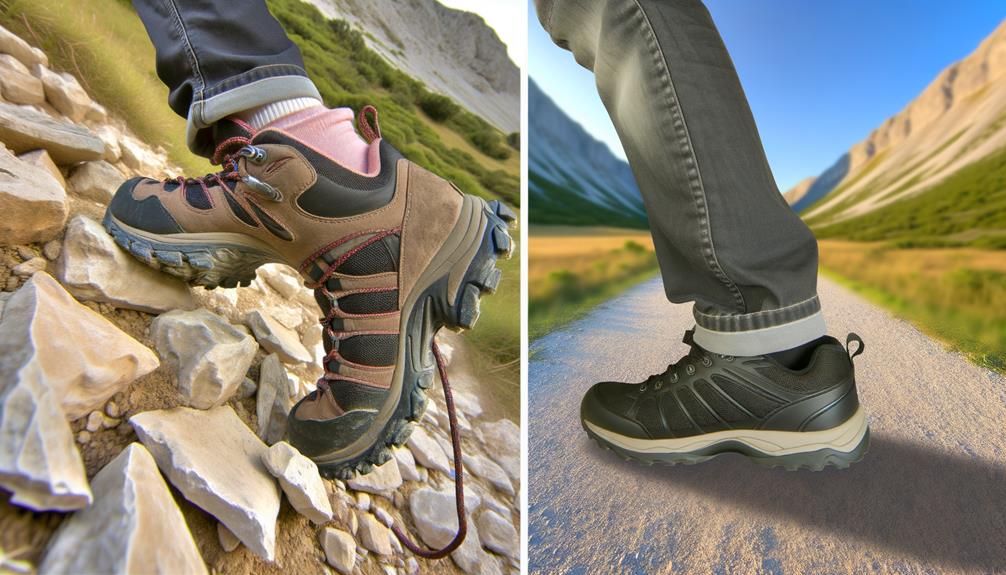
Understanding the importance of support and protection in hiking footwear is paramount for maintaining foot health and overall comfort during treks.
Hiking shoes, designed with reinforced features and ankle support, provide robust protection against outdoor elements and uneven terrains.
These design elements are essential to consider when choosing footwear for walking, as they significantly minimize the risk of injuries and enhance the hiking experience.
Footwear Support Essentials
Prioritizing the essentiality of footwear support and protection, one must recognize its crucial role in maintaining foot health and preventing potential injuries. A key point in the footwear support essentials is understanding the characteristics of hiking shoes and their differential support.
- Hiking shoes provide sturdy ankle support, curbing the likelihood of foot rolls during more challenging terrains.
- Enhanced arch support ensures stability and keeps the foot comfortable for long treks.
- Their cushioning and reinforced toe caps offer protection during intense hikes.
Choose the Right footwear based on your activity, be it hiking or walking. Remember, your choice of footwear can significantly impact your comfort and foot health. Make the smart decision and protect your feet.
Protection in Hiking Shoes
Building upon the foundation of footwear support essentials, it becomes evident how the protective features in hiking shoes are indispensable for ensuring foot safety and comfort during outdoor activities.
The protection in hiking shoes extends beyond mere comfort, offering a level of protection that is invaluable for anyone planning to wear hiking shoes for extended periods. These shoes also offer reinforced toe and heel caps, providing protection against rough terrain and unforeseen debris.
The durable construction and ankle support present in hiking shoes help to prevent twists and provide stability when traversing uneven ground.
Furthermore, hiking shoes are typically designed to be water-resistant or waterproof, protecting the wearer's feet from wet conditions.
The soles of hiking shoes are crafted with a superior grip for additional protection against slips on rugged terrain.
Waterproofing Versus Breathability
Navigating the dichotomy between waterproofing and breathability in hiking shoes requires a careful consideration of the conditions in which the shoes will be used and the wearer's comfort preferences. Waterproof hiking shoes are designed to prevent moisture from entering, keeping feet dry in wet conditions. These are the shoes to take for hiking in rainy or damp environments. On the other hand, breathable walking shoes utilize materials that reduce foot fatigue by permitting air circulation, making them suitable for fitness walking and long walks.
- Waterproofing versus breathability in hiking shoes:
- Waterproof shoes:
- Offer protection from harsh, wet conditions
- Ideal for unpredictable weather or damp terrains
- Might not be the best for long walks due to less breathability
- Breathable shoes:
- Prioritize foot comfort and reduce fatigue
- Perfect for long walks and fitness walking
- Might not offer the same level of protection in wet conditions
Therefore, the question of whether to opt for waterproofing or breathability in your hiking shoes boils down to the specific conditions and your personal comfort preferences.
Activity-Specific Footwear Considerations
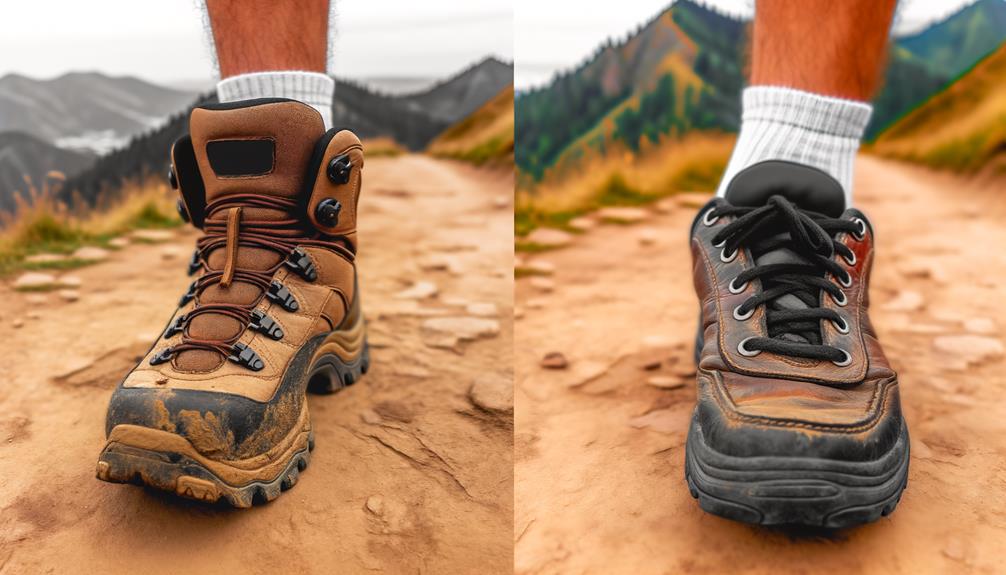
Understanding the unique footwear needs associated with different outdoor activities is paramount in selecting the ideal pair of shoes for hiking or walking. Activity-specific footwear considerations take into account the environmental demands of each activity, and the design of hiking and walking shoes reflect these specific needs.
Hiking shoes are constructed for rugged terrains, featuring reinforced toe caps and sides, greater grip and traction, and ankle support. These considerations are aimed at providing stability and preventing foot problems when traversing uneven landscapes. Waterproof or water-resistant construction further equips them for wet conditions, such as crossing streams or trekking through rain.
On the other hand, walking shoes are designed with a focus on comfort and alignment, crucial for long walks on flat, well-maintained trails. They feature cushioned heels and midsoles, lightweight construction, and breathable materials to keep feet dry and cool.
Tips for Choosing the Right Footwear
Having assessed the specific features of hiking and walking shoes, let's now explore some practical tips for choosing the right footwear for your outdoor activities. Whether you're buying your first pair or upgrading your gear, consider the following:
- Analyze the terrain and conditions:
- Opt for Hiking Shoes for more challenging environments.
- Walking shoes are suitable for flat, well-maintained trails.
- Hybrid-style shoes can be a versatile choice for overlapping conditions.
- Evaluate the shoe's attributes:
- Hiking shoes vs walking shoes: Hiking shoes offer durability and support, while walking shoes prioritize comfort and alignment.
- Waterproofing and breathability are crucial. Hiking shoes tend to be water-resistant, while walking shoes offer breathability, reducing foot fatigue.
- Ensure a proper fit:
- Your shoes should be snug in the heel and midfoot but leave room for your toes to splay.
- There should be space of at least a finger's width between your longest toe and the shoe end.
Bottom Line: Hiking Shoes for Walking

In conclusion, hiking and walking shoes each possess unique design features and advantages tailored to different terrains and user requirements. Hiking shoes, or boots, are specifically designed for the rigors of the trail. Their reinforced construction and additional ankle support provide stability on uneven surfaces and offer protection against the elements. They are durable, water-resistant, and afford better traction, making them ideal for hills, mountains, and slippery terrains.
Walking shoes, on the other hand, prioritize comfort, alignment, and breathability. They are typically lightweight, with good cushioning to minimize foot fatigue. These shoes are perfect for well-maintained and flat trails, where they provide adequate support without the added weight of hiking shoes.
However, using hiking shoes for walking on flat surfaces could cause blisters and discomfort due to their sturdy design and heavier weight. The feet, unaccustomed to the rigidity of hiking shoes, may suffer.
In the end, the choice between hiking shoes and walking shoes should be based on the specific use, terrain, and personal comfort. The right footwear can make the difference between an enjoyable outdoor experience and one marred by discomfort.
Frequently Asked Questions
Are Hiking Shoes Good for Daily Walking?
Hiking shoes offer durability and terrain adaptability, making them suitable for daily walking. However, their style may lack everyday comfort and breathability, potentially impacting foot health if used consistently on flat surfaces.
Is Walking Shoes Same as Hiking Shoes?
While both are footwear, hiking and walking shoes differ significantly. Shoe comparison reveals terrain differences, comfort assessment, durability debate, and shoe functionality. Cost analysis may favor one over the other, depending on individual needs and usage.
What Type of Shoe Is Best for Walking?
The best shoes for walking combine sneaker benefits such as sole durability and footwear comfort. Orthopedic options offer additional support. Materials should enhance walking efficiency, ensuring a snug fit while maintaining breathability for optimal foot health.
Is It Okay to Jog in Hiking Shoes?
Jogging in hiking shoes may not be ideal due to their heavy weight and rigid structure. While they offer excellent durability and foot support, their comfort, tread suitability, and potential impact on jogging speed could be compromised.
Conclusion
In the grand tapestry of outdoor adventures, the choice between hiking shoes and walking shoes is not simply black and white. It is delicately hinged on the terrain, weather conditions, and specific requirements of the activity.
While hiking shoes offer sturdy support and protection for rough terrains, walking shoes excel in comfort and breathability on well-maintained trails.
Ultimately, employing the right footwear is crucial to ensuring an enjoyable and safe experience in the great outdoors.

With years of extensive experience, I specialize in evaluating waterproof hiking shoe options across various brands. My goal is to offer valuable insights and recommendations, enhancing your hiking experience with tips and suggestions for a more adventurous and comfortable journey.

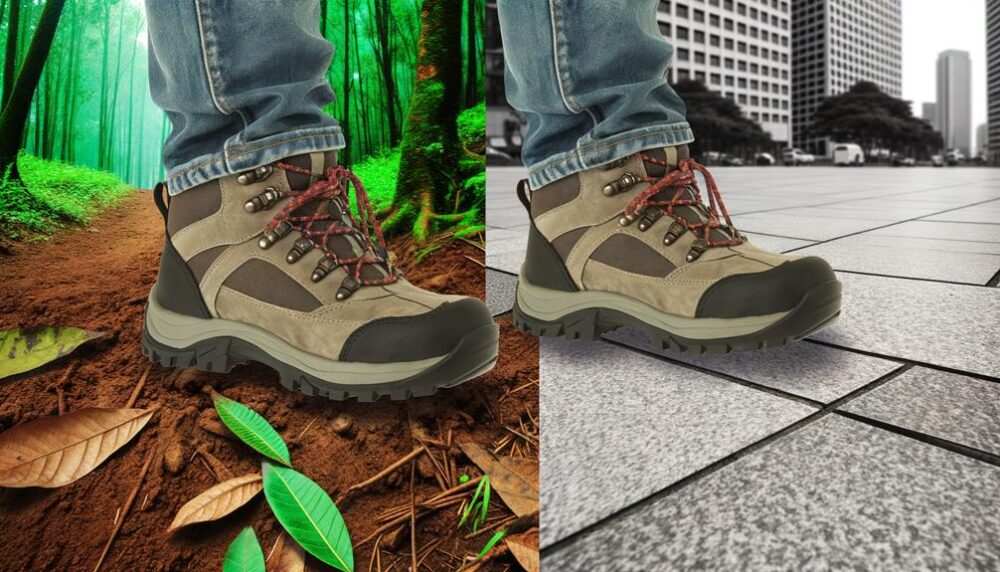
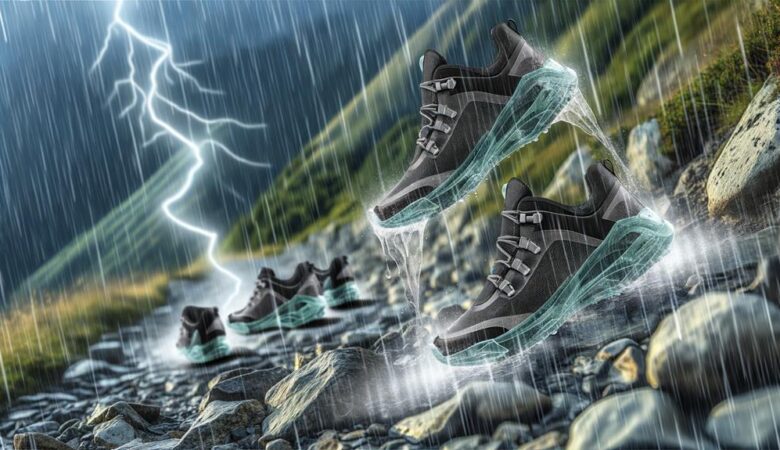
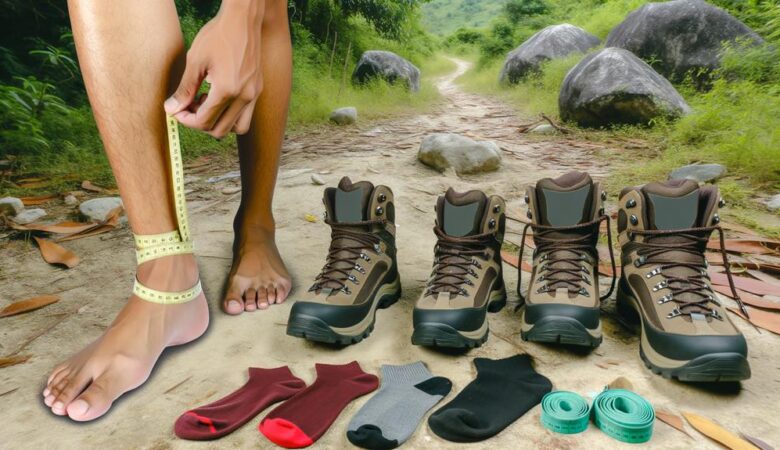
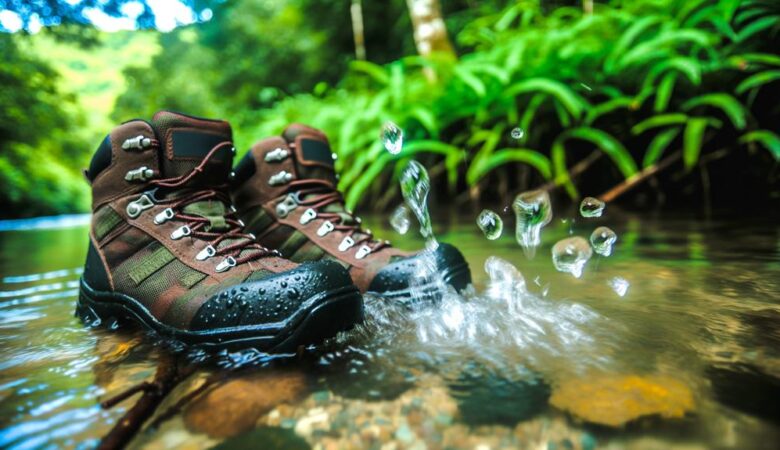
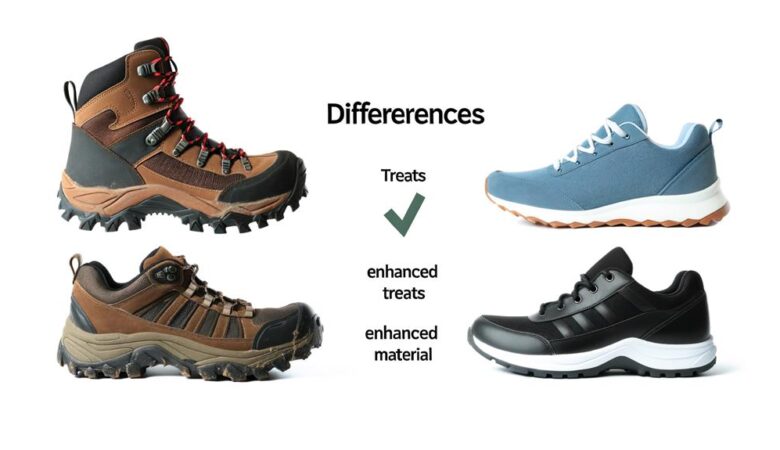
Leave a Reply